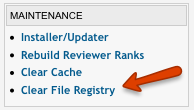Difference between revisions of "Category Layout Manager"
| Line 1: | Line 1: | ||
== What is Theme Manager == | == What is Theme Manager == | ||
| − | Theme Manager allows you to easily | + | Theme Manager allows you to easily manage customizations for individual sections and categories in JReviews, including the listing detail pages. |
| − | In the Theme Manager page you'll find buttons for '''Section Themes''' and '''Category Themes'''. Clicking on them will display a list of all sections/categories allowing you to select a different layout (Blogview, Tableview or Thumbview) and assign theme file suffixes for each of them. Theme suffixes are explained in more detail below. | + | In the Theme Manager page you'll find buttons for '''Section Themes''' and '''Category Themes'''. Clicking on them will display a list of all sections/categories, allowing you to select a different layout (Blogview, Tableview or Thumbview) and assign theme file suffixes for each of them. Theme suffixes are explained in more detail below. |
For any given page, except for search results, the category theme setup is checked first, then the section theme setup and finally the global setting (items list tab in configuration settings). | For any given page, except for search results, the category theme setup is checked first, then the section theme setup and finally the global setting (items list tab in configuration settings). | ||
| Line 12: | Line 12: | ||
[[File:TemplateManager.png]] | [[File:TemplateManager.png]] | ||
| − | When a suffix is assigned (i.e. _services), you can copy and rename any view/css file to use that suffix. If the file is found it will be used, otherwise the default view/css files are used. | + | When a suffix is assigned (i.e. _services), you can copy and rename any view/css file to use that suffix. If the file is found, it will be used, otherwise the default view/css files are used. |
<span style="color: blue">Example:</span> | <span style="color: blue">Example:</span> | ||
*/listings/detail.thtml - original detail page theme file | */listings/detail.thtml - original detail page theme file | ||
| − | */listings/detail_services.thtml - modified file that will be used only for articles that belong to the Services section | + | */listings/detail_services.thtml - modified file that will be used only for articles that belong to the Services section. |
Revision as of 21:43, 31 January 2011
What is Theme Manager
Theme Manager allows you to easily manage customizations for individual sections and categories in JReviews, including the listing detail pages.
In the Theme Manager page you'll find buttons for Section Themes and Category Themes. Clicking on them will display a list of all sections/categories, allowing you to select a different layout (Blogview, Tableview or Thumbview) and assign theme file suffixes for each of them. Theme suffixes are explained in more detail below.
For any given page, except for search results, the category theme setup is checked first, then the section theme setup and finally the global setting (items list tab in configuration settings).
Examples
When a suffix is assigned (i.e. _services), you can copy and rename any view/css file to use that suffix. If the file is found, it will be used, otherwise the default view/css files are used.
Example:
- /listings/detail.thtml - original detail page theme file
- /listings/detail_services.thtml - modified file that will be used only for articles that belong to the Services section.
To learn how to modify theme files and which files need to be modify, read Theme Customization articles
After adding new files to your theme, you must always click the Clear File Registry link in the JReviews Administration so JReviews can recognize the new files.
You can also have different theme files for JReviews Menu items and Modules.
For the Menu Items, you can specify different theme suffix in the menu item's preferences.
For the Modules, you can specify different theme suffix in the module's preferences.

